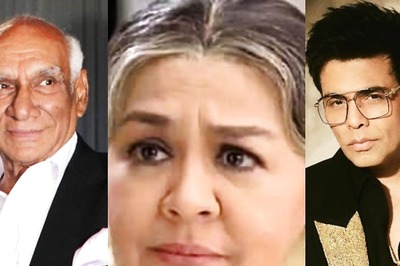
views
Thiruvananthapuram: Indian Space Research Organisation (ISRO), which had a recent setback with the failure of its latest communication satellite GSAT-5P, is planning three major satellite launches in the first quarter of this year.
'Resourcesat-2', an advanced remote sensing satellite, 'Youthsat', a participatory scientific mission with payloads from both Russia and India, and X-sat, Singapore's first indigenous satellite, will be the launched on board of home made PSLV C-16 in February, March and April, ISRO Chairman Dr K Radhakrishnan said here.
"We have three major missions slated to be done in coming February, March and April months. Among them Resourcesat-2 is meant to replace Resourcesat-1, launched in 2003, to provide data connectivity," Dr Radhakrishnan during his presidential address to an international conference on Contemporary trends in Optics and Optoelectronics at the Vikram Sarabhai Space Centre here.
"The 'Youthsat' would carry a payload developed by the students of Moscow University in Russia," he told the meet organised by Indian Institute of Space Science and Technology (IIST) and Optical Society of India (OSI).
"PSLV-C16 vehicle has already been assembled at the space port at Sreeharikota. Resourcesat-2 and Youthsat are getting ready for shipment to SHAR from the ISRO's centres. Both these satellites carry a host of advance optical payloads," he said.
Another communication satellite GSAT-8 is getting ready for launch onboard Ariane-5 in April-May 2011.
Alluding to the recent failure of GSLV, the Chairman said "We have several success stories and a couple of failures. We will learn from our failures," he said.
The cause of the failure had been pinpointed and could tell anything about it only after detailed evaluation and studies, Radhakrishnan said.
"We had 9 launches and realised 9 spacecrafts including the path-breaking Chandrayaan during the four years 2006-09. We saw 7 successful missions of PSLV including two dedicated commercial launches, and 2 missions of GSLV with a failure of GSLV F02 in 2006 and a partial success of GSLV-F04 in 2007. We realised 7 Satellites including the high resolution artosat-2 series that brought us into an exclusive club globally," he said detailing India's space programmes in the last five years.
"Globally our efforts have been recognized. Several of world s major space powers Russia, USA and France -have showed keen interest in partnering with India on several fronts in space," he said.
Microwave Remote Sensing Satellite -RISAT-1, Meteorological Satellite INSAT-3D, Communication Satellites such as GSAT-7 and GSAT-10 and two Indo-French Joint Missions viz., Megha-Tropiques and SARAL are the agency's major plans in the next year, Radhakrishnan said.
Emphasising the importance of optical studies in space technology, he said "Optics is second only to microwave engineering in space science. The science has come a long way-to this modern age of opto-electronic sensors and devices that find wide applications in myriad areas including space technology, communications, manufacturing, medicine and medical equipment, and bio-photonics, to name a few."
Vikram Sarabhai Space Centre (VSSC) Director P S Veeraraghavan, Indian Institute of Space Science and Technology (IIST) director Dr K S Das Gupta, VSSC Chief Controller K M Nair, XXXV OSI Symposium Convenor C S Narayanamurthy, Director Indian Institute of Science Education and Research (IISER) Prof. E D Jemmis, Director ISAC (ISRO Satellite Centre) DR T K Alex were also present.

















Comments
0 comment